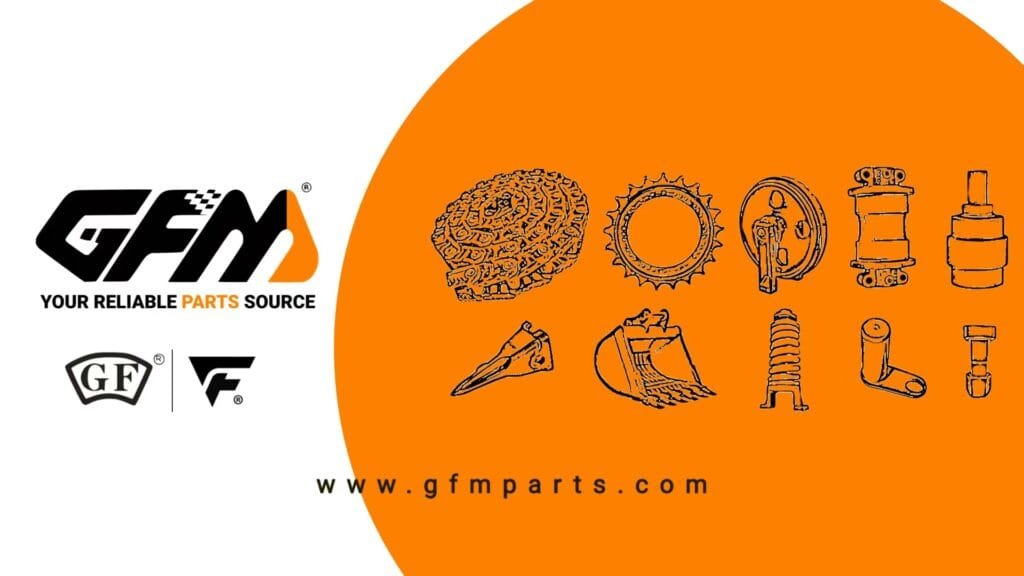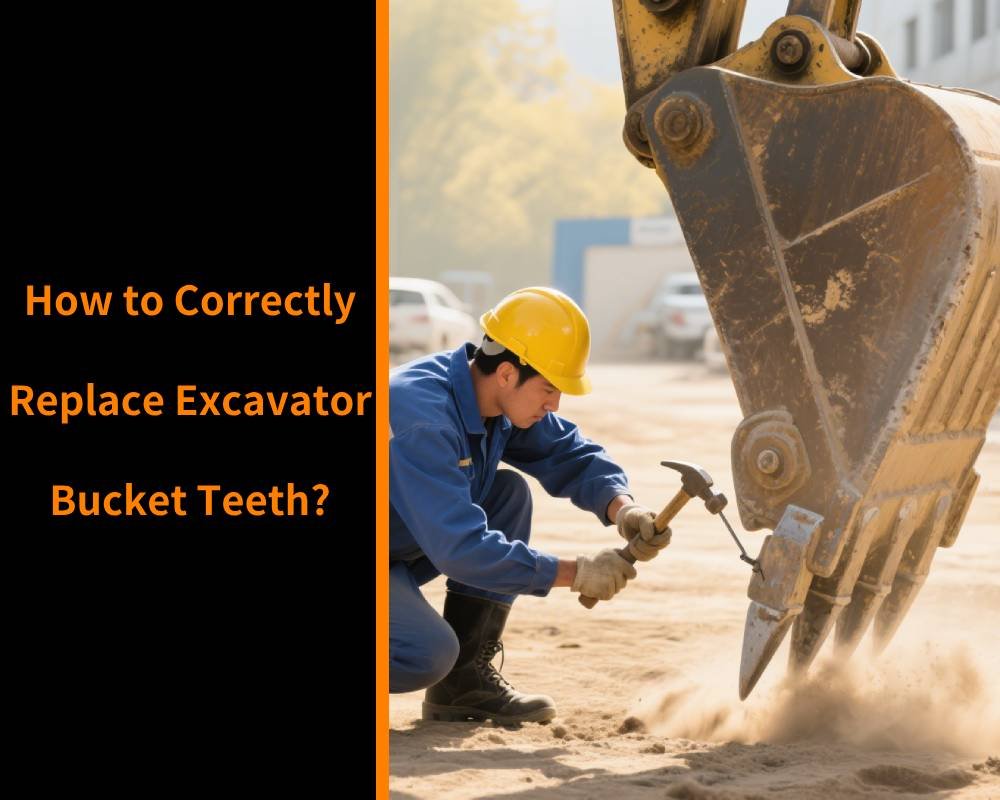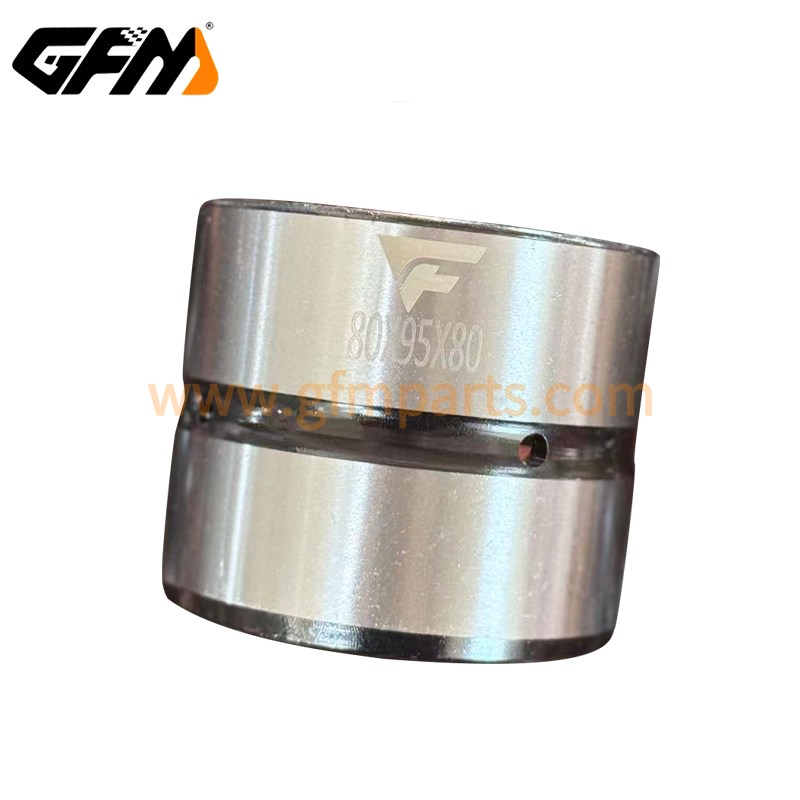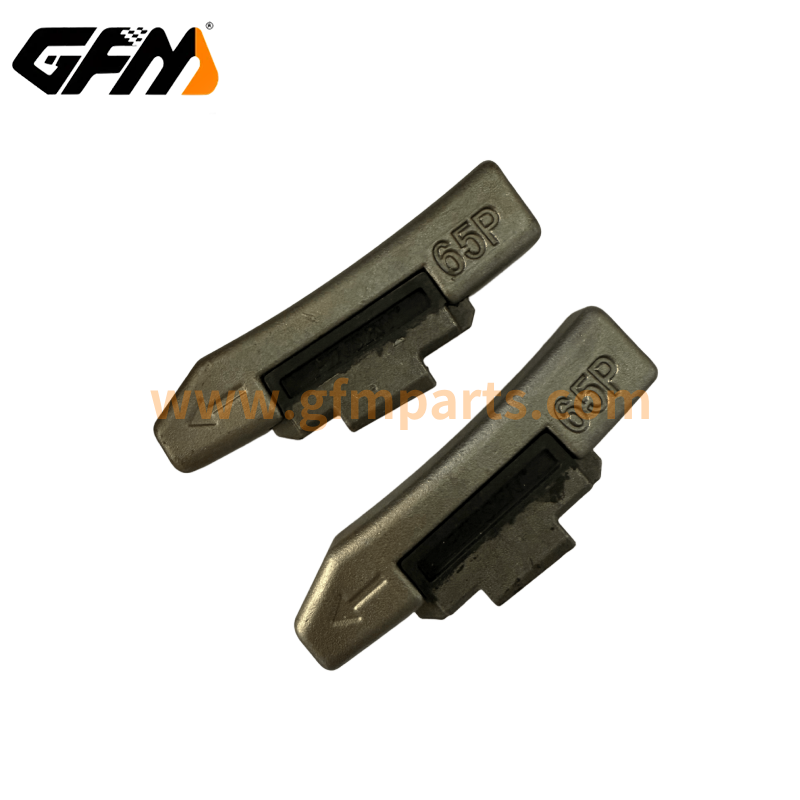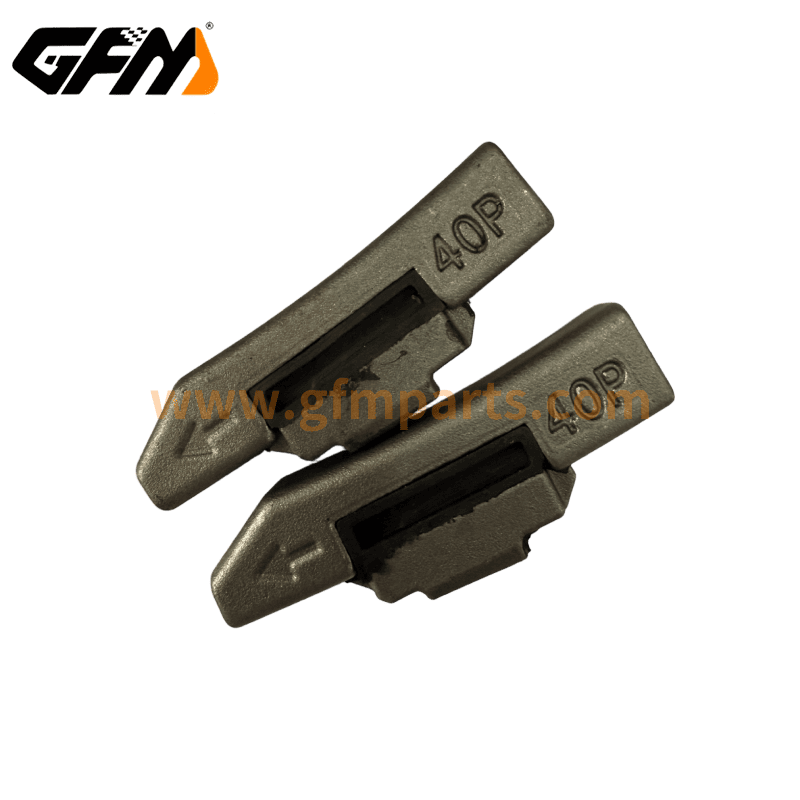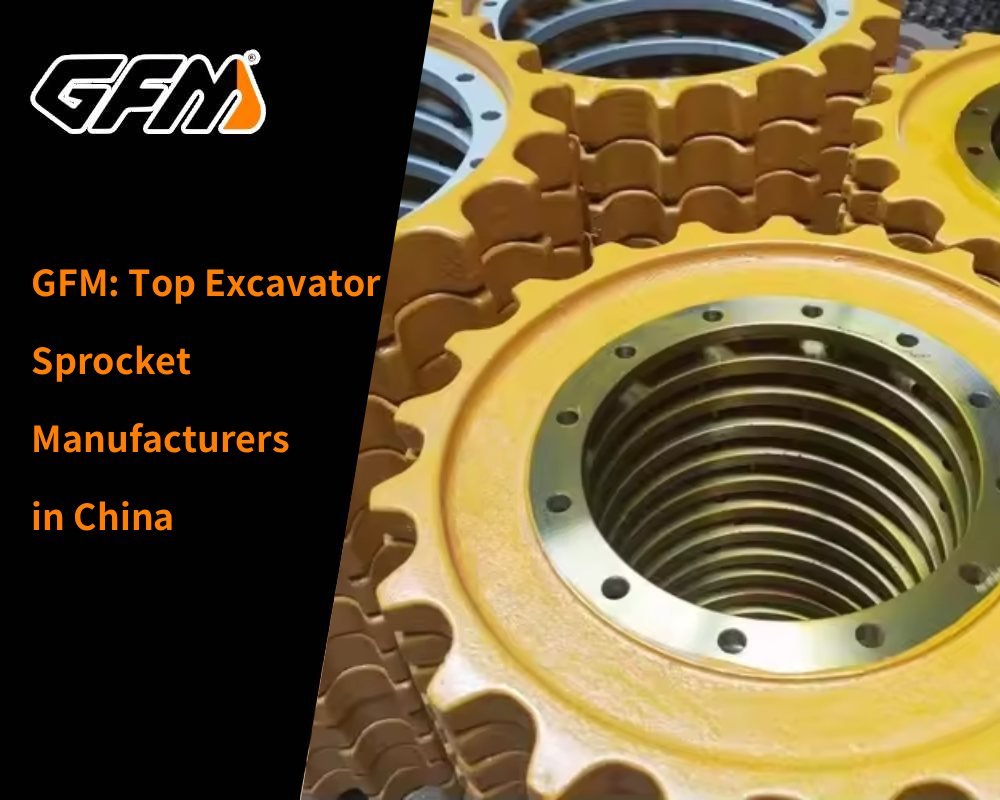İçindekiler
- Ekskavatör kepçe dişleri ne zaman değiştirilmelidir? Aşınmanın 5 temel belirtisini belirleyin
- Ekskavatör kepçe dişlerinin değiştirilmesine hazırlık: aletler, çevre ve güvenlik
- Ekskavatör dişlerinin değiştirilmesi için ayrıntılı adımlar: adım adım, baskı yapmadan tamamlayın
- Kepçe dişlerini değiştirirken yapılan yaygın hatalar ve bunlardan nasıl kaçınılır
- Yeni kepçe dişlerinin kullanım ömrü nasıl uzatılır? Pratik bakım ipuçları paylaşımı
- Kepçe dişlerinizi değiştirmek için neden GFM ekskavatör parçaları fabrikasını seçmelisiniz?
Herhangi bir şantiyede, ekskavatörün verimliliği genellikle tüm projenin ilerlemesini ve maliyet kontrolünü doğrudan etkiler. Ekskavatörün tüm parçaları arasında, kepçe dişleri, görünüşte önemsiz olsa da kilit bir rol oynar. Kepçe dişleri, ekskavatör ile toprak, kaya ve çakıl gibi malzemeler arasındaki ilk temas noktasıdır. Sadece kazma kuvvetini etkilemekle kalmaz, aynı zamanda her kazmanın verimliliğini ve doğruluğunu da belirler.
Uzun süreli kullanımda, kepçe dişleri sürekli sürtünme nedeniyle aşınır, hatta kırılır. Zamanında değiştirilmezlerse, sadece kazma verimliliğini etkilemekle kalmaz, aynı zamanda kepçe dişi yuvasına zarar verebilir, tüm kepçe sistemini bozabilir ve bakım maliyetlerini artırabilir. Bu makale, kepçe dişlerinin değiştirilip değiştirilmeyeceğine nasıl karar verileceği, değiştirme adımları, kullanım sırasında kepçe dişlerinin ömrünün nasıl uzatılacağı ve özellikle GFM tarafından sağlanan kepçe dişlerinin neden tercih edilmesi gerektiği konusunda ayrıntılı bir giriş sunacaktır. ekskavatör kepçe dişleri üreticileri daha güvenilir bir tercih olacaktır.
Ekskavatör kepçe dişleri ne zaman değiştirilmelidir? Aşınmanın 5 temel belirtisini belirleyin
Kazı verimliliği önemli ölçüde azalır
Kepçe dişinin ucu, zemini kırmak için kilit noktadır. Körleştiğinde, kazma direnci artar, ekskavatör daha yavaş hareket eder ve inşaatın ilerlemesi engellenir. Aynı çalışma koşullarında saatlik çıktının azaldığını fark ederseniz, kepçe dişlerinin artık keskin olmadığı muhtemeldir.
Kazı sırasında anormal ses
Yeni kepçe dişleri, kazı sırasında nispeten istikrarlı bir ses çıkarır. Bir kepçe dişi gevşediğinde veya düştüğünde, kazı işlemi sırasında "metal çarpması" veya anormal bir titreşim sesi duyulur. Bunlar, kepçe dişlerinin eskidiğinin veya yanlış takıldığının uyarı işaretleridir.
Diş ucu belirgin şekilde körelmiş veya kırılmış
Kova dişlerini çıplak gözle inceleyin. Başlangıçta keskin olan diş başlığı düzleşmiş, hatta çatlamış veya kırılmışsa, derhal değiştirilmelidir. Kullanıma devam edilmesi kova dişi yuvasına zarar verecek veya diğer parçalarda anormal strese neden olacaktır.
Diş kökü neredeyse düz bir şekilde aşınmış
Bazı kullanıcılar sadece diş ucuna dikkat eder ve kökü göz ardı eder. Aslında, kepçe dişinin gücünün özü köktedir. Kök ciddi şekilde aşındığında, yüksek yoğunluklu işlemler sırasında kırılması kolaydır ve bu da tüm kepçe cihazının çalışmamasına neden olur.
Diş yuvası deformasyonu veya kilit pimi gevşek
Kepçe dişlerini her değiştirdiğinizde, diş yuvasının ve kilit piminin durumunu kontrol etmelisiniz. Diş yuvasının artık dikey olmadığını veya kilit piminin kepçe dişlerini sabitleyemediğini fark ederseniz, yeni kepçe dişlerini değiştirseniz bile güvenli kullanım sağlamak zor olacaktır.
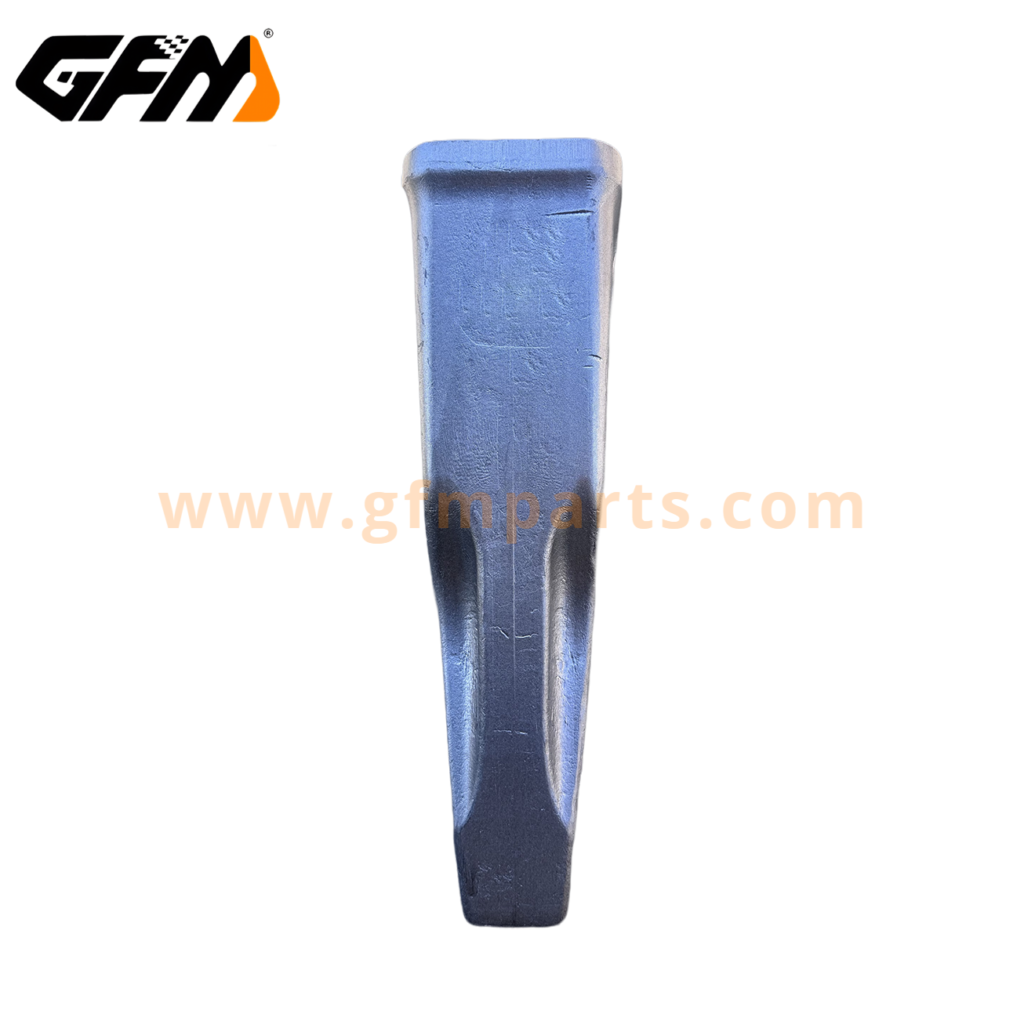
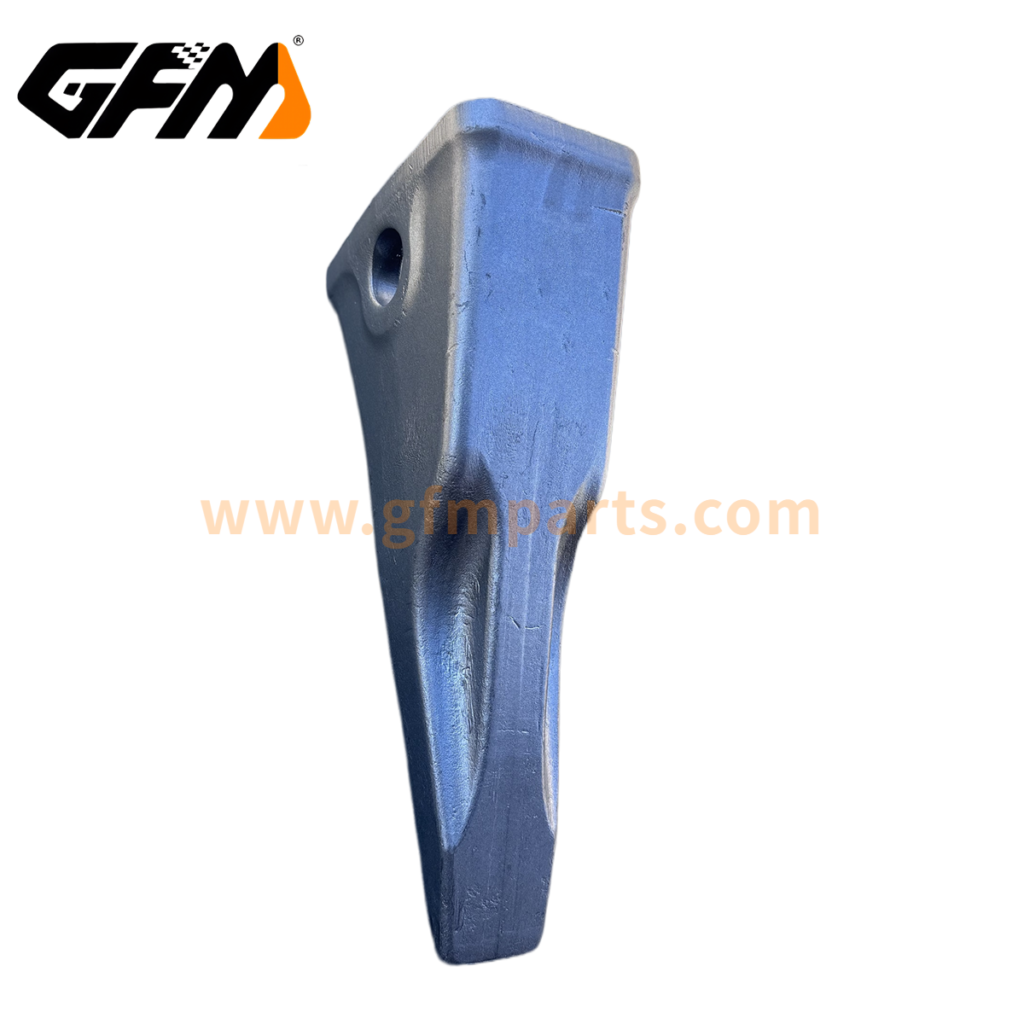
Ekskavatör kepçe dişlerinin değiştirilmesine hazırlık: aletler, çevre ve güvenlik
Kepçe dişlerini değiştirmeye başlamadan önce hazırlık çok önemlidir. Standart bir değiştirme, sadece çalışma yaralanmalarını önlemekle kalmaz, aynı zamanda yeni kepçe dişlerinin kullanım ömrünü de uzatır.
Gerekli araçlar
- Balyoz ve levye: Eski kepçe dişlerini söküp yeni kepçe dişlerini takmak için kullanılır.
- Keski veya çelik keski: Kepçe dişli pimleri kırmak için kullanılır.
- Koruyucu eldiven ve gözlük: Değiştirme sırasında el ve göz güvenliğini sağlamak için.
- Yağlayıcı yağ veya pas sökücü: Aşırı paslanmış pimleri çıkarmaya yardımcı olmak için kullanılır.
Çevresel gereksinimler
Islak zemin nedeniyle aletlerin kaymasını önlemek için kuru ve düz bir çalışma ortamı seçmeye çalışın. Kazaları önlemek için ekskavatörün vitesini boşa alıp el frenini çekmeniz önerilir. Gerekirse, lastiklere veya paletlere üçgen tahta takozlar yerleştirin.
Güvenlik önlemleri
- Kova kolunun yanlış çalışmasını önlemek için çalıştırmadan önce gücü kapattığınızdan ve motoru durdurduğunuzdan emin olun.
- Başkalarının kazara yaralanmasını önlemek için, aynı anda birden fazla kişinin kepçe dişinin bir tarafında ameliyat yapmasına izin vermeyin.
- Balyozu kullanırken tepki kuvvetinden dolayı düşmemek için sağlam durun.
Ekskavatör dişlerinin değiştirilmesi için ayrıntılı adımlar: adım adım, baskı yapmadan tamamlayın
Dişlerin değiştirilmesi karmaşık bir işlem değildir, ancak yeni dişlerin sağlam, güvenli ve verimli bir şekilde çalışmasını sağlamak için her adımın yerinde olması gerekir. Aşağıda, adım adım uygulanması önerilen daha ayrıntılı bir işlem talimatı yer almaktadır:
Adım 1: Diş modelinin aksesuarlarla eşleştiğini onaylayın
Değiştirmeden önce, mevcut dişlerin modelini, şeklini, boyutunu, bağlantı yöntemini (yan geçmeli, üst geçmeli gibi), pim mili boyutunu ve diş yuvası açıklığını dikkatlice kontrol etmelisiniz. Kullanım kılavuzuna, eski dişlere kazınmış modele bakabilir veya öneriler için GFM uzmanlarına danışabilirsiniz. Yanlış model seçimi, montajı zorlaştıracak ve hatta güvenliği etkileyecektir.
Adım 2: Eski dişlerin etrafındaki alanı temizleyin
Dişler ile diş yuvası arasındaki bağlantı noktasındaki kum, yağ ve pası temizlemek için tel fırça, bez veya yüksek basınçlı hava tabancası kullanın; özellikle kilit pimi deliğinin iç kısmına dikkat edin. Ciddi paslanma varsa, az miktarda pas sökücü uygulayın ve sıkışma veya hatalı çalışmayı önlemek için sonraki sökme ve takma işlemlerinin sorunsuz bir şekilde gerçekleşmesini sağlamak amacıyla temizlemeden önce birkaç dakika bekleyin.
Adım 3: Eski kepçe dişlerini çıkarın
Kilit pimini gevşetmek ve çıkarmak için çelik bir keski veya levye kullanın. Bazı kilit pimi yapılarında, önce kilitlerinin açılması gereken yaylı kartlar veya somunlar bulunabilir. Ardından, kepçe dişlerinin her iki tarafını iki elinizle tutun, hafifçe sallayın veya lastik bir çekiç kullanarak arka tarafına hafifçe vurarak diş yuvasından ayırın. Sıkışmışlarsa, kuvveti uygun şekilde artırabilir veya bir levye kullanarak kaldırabilirsiniz.
Adım 4: Diş yuvasının ve pim deliğinin hasarlı olup olmadığını kontrol edin
Eski kepçe dişleri çıkarıldıktan sonra, diş yuvası tamamen kontrol edilmelidir: deformasyon, çatlak, aşırı aşınma vb. olup olmadığına, özellikle de kilit pimi deliğinin iç duvarının sağlam olup olmadığına dikkat edilmelidir. Anormallikler tespit edilirse, yeni kepçe dişlerinin sabitleme etkisini etkilememek için diş yuvası zamanında değiştirilmeli veya onarılmalıdır.
Adım 5: Yeni kepçe dişlerini takın
Tam hizalama sağlamak için yeni kepçe dişlerini diş yuvası deliğine orijinal yönünde yerleştirin. Ardından, genellikle bastırılarak veya çekiçle vurularak yerleştirilen yeni kilit pimini takın. Kilit pimi yuvaya tamamen yerleşene kadar çekiçle vurun ve kolayca çıkmadığından emin olun. Kepçe dişinin takılması zorsa, itme işlemine yardımcı olması için bir çekiç kullanabilirsiniz, ancak kepçe dişi gövdesine veya diş yuvası arayüzüne zarar vermemek için zorlamayın.
Adım 6: Sıkma durumunu ve açısını tekrar kontrol edin
Kurulumdan sonra, kepçe dişinin önünde ve yanında durarak dikey mi yoksa eğik mi olduğunu kontrol edin. Kepçe dişi ve pim şaftını elle sallayarak sabit ve gevşek olmadıklarından emin olun ve kilitleme piminin doğru şekilde takılıp takılmadığını tekrar kontrol edin.
Adım 7: Test çalıştırma denetimi
Ekskavatörü çalıştırın ve hafif kazma, kepçeyi yerinde döndürme, kolu sallama vb. gibi kısa süreli yüksüz işlemler gerçekleştirerek kepçe dişinin sallanıp sallanmadığını, düşüp düşmediğini veya anormal sesler çıkarıp çıkarmadığını gözlemleyin. Herhangi bir sorun tespit ederseniz, makineyi derhal durdurup kontrol edin ve tekrar düzeltin.
Yukarıdaki adımlar tamamlandıktan sonra kepçe dişi değişimi işlemi gerçek anlamda tamamlanmış olur. Tüm süreç karmaşık olmasa da, başarıyı veya başarısızlığı detaylar belirler. Sabırlı olun ve her aşamayı harfiyen uygulayın.

Kepçe dişlerini değiştirirken yapılan yaygın hatalar ve bunlardan nasıl kaçınılır
Kepçe dişlerini değiştirirken deneyimli operatörler bile bazı hatalar yapabilir ve bu da ekipmanın kullanım ömrünü etkileyebilir.
Hata 1: Model eşleştirmesini göz ardı etme
Bazı kullanıcılar genellikle "benzer boyutta" düşüncesiyle alternatif modeller kullanırlar, bu da diş kökünün ve diş yuvasının gevşemesine ve çalışma sırasında düşme riskine neden olur.
Hata 2: Eski pim milini kullanmaya devam edin
Kova dişli pim şaftı, kova dişlerini sabitlemek için önemli bir parçadır. Eski pim şaftı, uzun süreli kullanımdan sonra deforme olmuş veya aşınmış olabilir. Kullanıma devam edilmesi, genel yapısal stabiliteyi azaltacaktır.
Hata 3: Eksik kurulum
Kepçe dişleri diş yuvasına tam olarak oturmamıştır. Yüksek frekanslı titreşimler nedeniyle gevşeyip fırlayarak ciddi durumlarda insanlara zarar verebilirler.
Hata 4: Kurulum sırasında temiz değil
Diş yuvasının içindeki kum, pas veya yağ temizlenmezse, yeni kepçe dişlerinin yerine oturması zorlaşır veya kilit pimi yerleştirilemez.
Yeni kepçe dişlerinin kullanım ömrü nasıl uzatılır? Pratik bakım ipuçları paylaşımı
Kepçe dişlerinin değiştirilmesi sadece bir başlangıçtır. Bilimsel bakım yöntemleri, kepçe dişlerinin verimliliğini gerçekten en üst düzeye çıkarabilir ve uzun vadeli maliyetlerden tasarruf sağlayabilir.
Kazı açısını makul bir şekilde kontrol edin
Kazı yaparken dikey yerleştirme ve açılı kaldırma hareketlerinden kaçının ve yaklaşık 45°'lik doğal bir kesme açısını korumaya çalışın; bu sadece verimliliği artırmakla kalmaz, aynı zamanda kepçe dişlerinin aşınma sıklığını da azaltır.
Orijinal kalitede kepçe dişleri seçin
Piyasada çok sayıda taklit veya düşük fiyatlı kepçe dişi bulunsa da, bu ürünler genellikle dengesiz çelik bileşimine ve dengesiz ısıl işleme sahiptir, bu da kullanım ömrünü önemli ölçüde kısaltır. GFM gibi güvenilir üreticilerin kepçe dişlerini seçmek, ekipmanı korumanın temel garantisidir.
Düzenli muayene ve sıkma
Kova dişlerinin ve pimlerin sıkılığını her 40-50 saatlik çalışmadan sonra kontrol etmeniz önerilir. Herhangi bir gevşeklik varsa, küçük hatalar yüzünden genel görüntüyü kaybetmemek için zamanında giderin.
Anormal ortamlarda çalışmaktan kaçının
Asidik ve alkali çamurda uzun süreli çalışmaktan veya yüksek sıcaklıktaki asfaltta uzun süreli daldırmadan kaçının. Eğer bu durum kaçınılmazsa, kepçe dişleri çalışmadan sonra mümkün olan en kısa sürede temizlenip kurutulmalıdır.
Mevsime göre yağlama ve bakım
Kışın düşük sıcaklık koşullarında metalin sünekliği zayıftır ve kepçe dişlerinin kırılma olasılığı daha yüksektir. Birleşim yerlerinde bakım için özel yağlayıcılar kullanılması önerilir; yazın ise yüzey ısı dağılımına ve paslanmaya karşı korumaya dikkat edilmelidir.
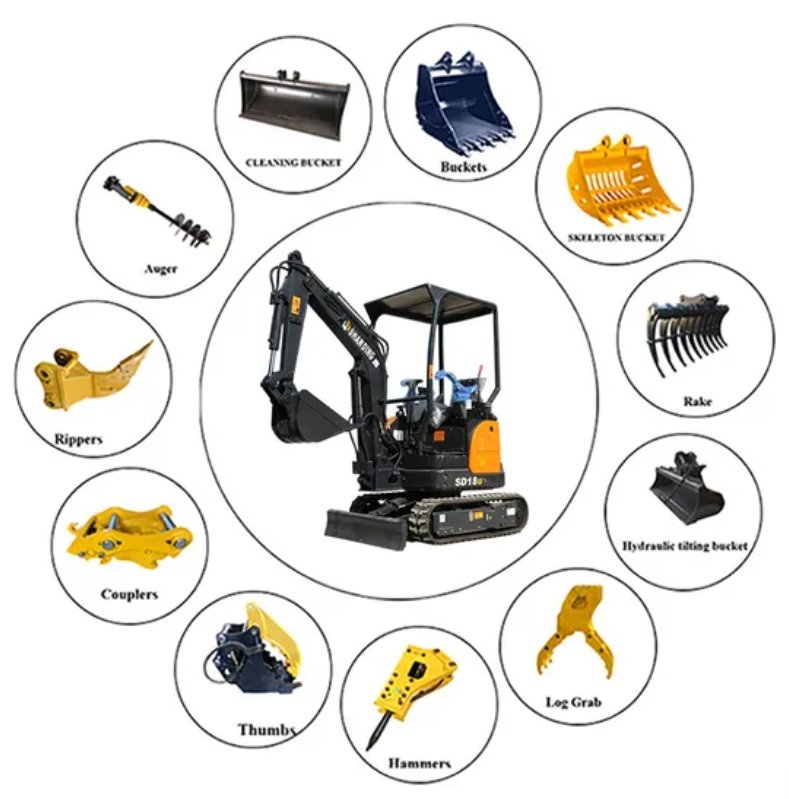
Kepçe dişlerinizi değiştirmek için neden GFM ekskavatör parçaları fabrikasını seçmelisiniz?
Küresel ekskavatör parçaları pazarında GFM, yüksek kaliteli ve dayanıklı kepçe dişli ürünleriyle müşterilerinin güvenini her zaman kazanmıştır. GFM'yi seçmek sadece aksesuar seçmek değil, aynı zamanda eksiksiz bir inşaat verimliliği çözümleri seti seçmek anlamına gelir.
Üstün malzeme ve sağlam yapı
GFM kepçe dişleri, yüksek mukavemetli alaşımlı çelikten dövülerek sertlik ve dayanıklılığı artırmak için yüksek frekanslı ısıl işlem teknolojisiyle birleştirilmiştir ve zorlu çalışma koşullarında kırılmalarının veya düşmelerinin kolay olmamasını sağlar.
Hassas üretim ve yüksek uyum derecesi
GFM, her bir kepçe dişinin boyutunu 0,1 mm'ye kadar kontrol ederek kepçe dişi yuvasıyla mükemmel bir kavrama, kolay kurulum ve daha güvenli kullanım sağlar.
Özel ihtiyaçları karşılamak için özelleştirmeyi destekleyin
Farklı toprak tipleri ve inşaat ortamları, kepçe dişleri için farklı gereksinimlere sahiptir. GFM, müşterinin inşaat ortamına göre kaya tipi, maden tipi, genel tip vb. gibi çeşitli kepçe dişleri sağlayabilir ve hatta özelleştirilmiş çizim işlemlerini destekleyebilir.
Küresel müşterilere yıllardır hizmet, zengin deneyim
GFM, on yılı aşkın yurtdışı ihracat deneyimine sahiptir ve ürünleri Güneydoğu Asya, Afrika, Avrupa ve diğer bölgelere ihraç edilmekte ve müşteriler tarafından büyük ilgi görmektedir. GFM, Çince ve İngilizce satış sonrası destek ve teknik danışmanlık hizmeti sunmaktadır.
Sıkı kalite kontrolü, kalite izlenebilirliği
Her kepçe dişi partisinin bağımsız bir numarası ve muayene raporu vardır ve hammadde tedarikinden fabrika muayenesine kadar eksiksiz kayıtlar mevcuttur. Müşteriler, ISO standart sistemine uygun olarak izleme ve inceleme konusunda gönül rahatlığıyla çalışabilirler.
| Hızlı ve ücretsiz bir teklif alın | E-posta: henry@gfmparts.com | Whatsapp: +86 17705953659 |
Kepçe dişleri küçük olsa da, ekskavatörün doğrudan çıkış noktasıdır. Kepçe dişlerinin aşınma durumunu makul bir şekilde değerlendirmek, kepçe dişlerini değiştirmek için standart yöntemler kullanmak ve bilimsel bakım alışkanlıklarını birleştirmek, kazı ekipmanının verimli ve istikrarlı bir çalışma durumunda kalmasını sağlayabilir.
Değiştirme yöntemi standartlaştırılmazsa, en azından işletme verimliliğini düşürecek, en kötü ihtimalle ekipman hasarına ve hatta inşaat güvenliği kazalarına neden olacaktır. Aksine, standartlaştırılmış ve titiz bir değiştirme işlemi yalnızca inşaat verimliliğini artırmakla kalmaz, aynı zamanda kepçe dişlerinin ve diş yuvalarının genel ömrünü uzatır ve bakım maliyetlerini düşürür.
Ayrıca, doğru kepçe dişli markasını ve tedarikçisini seçmek de kritik öneme sahiptir. Güvenilir bir marka olarak ekskavatör alt takım parçaları üreticisi GFM, sektörde yalnızca yüksek kaliteli, aşınmaya dayanıklı kepçe dişli ürünler sağlamakla kalmıyor, aynı zamanda müşterilerine teknik rehberlik, satış sonrası destek ve her türlü inşaatınıza eşlik edecek özelleştirilmiş hizmetler sunan profesyonel bir ekibe de sahiptir.
İster ekipman operatörü, ister bakım sorumlusu, ister parça satın alıcısı olun, kepçe dişlerinin düzenli muayenesine ve bilimsel olarak değiştirilmesine dikkat etmelisiniz. Yalnızca ayrıntılara dikkat ederek ve doğru ürün ve yöntemleri seçerek, yarı yarıya daha az çabayla iki kat daha fazla sonuç elde edebilir ve sağlam bir yapı oluşturabilirsiniz.
Sağlam, dayanıklı ve profesyonel ekskavatör kepçe dişli ürünleri arıyorsanız, lütfen GFM ekibimizle iletişime geçin. Şantiyede daha iyi performans göstermenize yardımcı olacak tek noktadan çözüm sunacağız.
